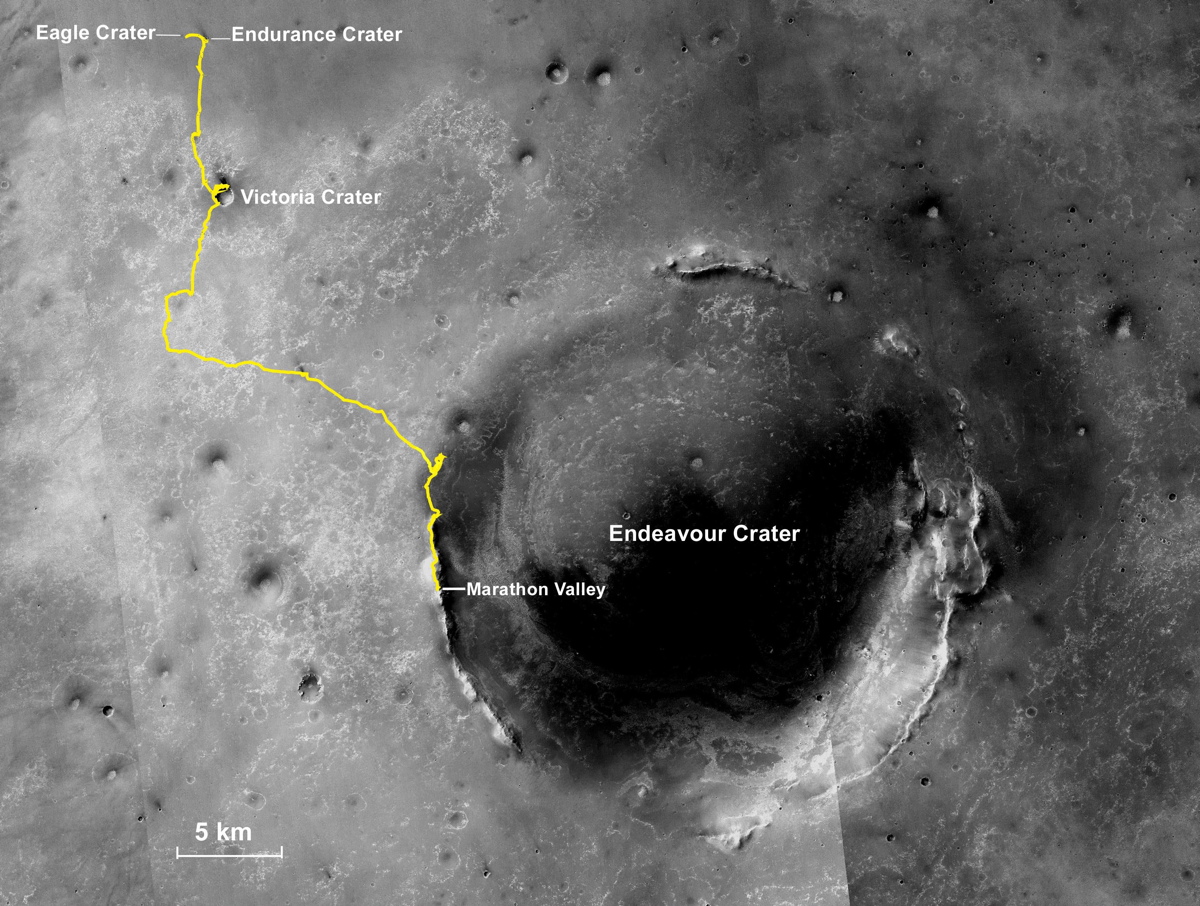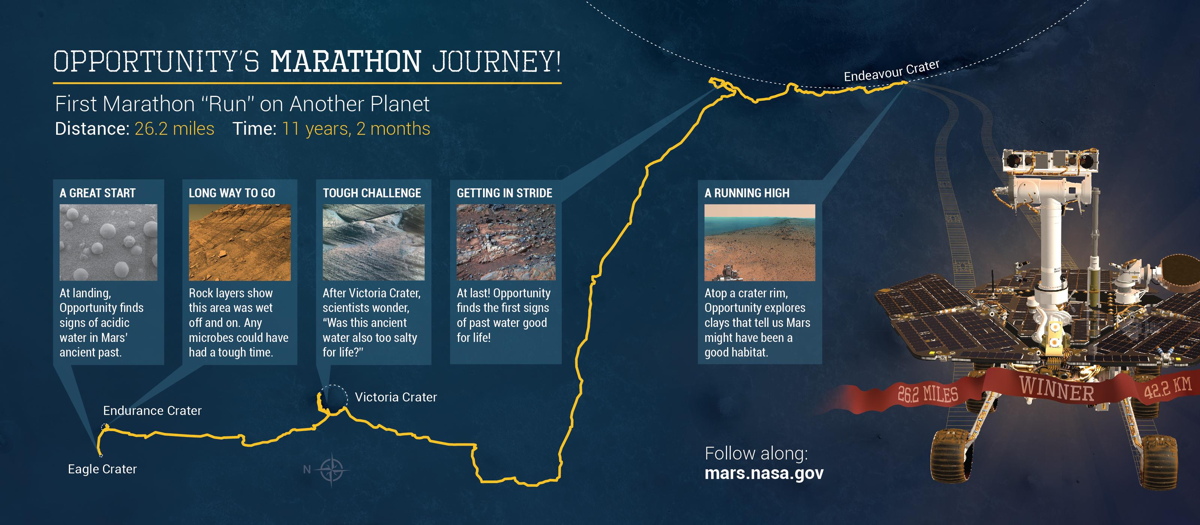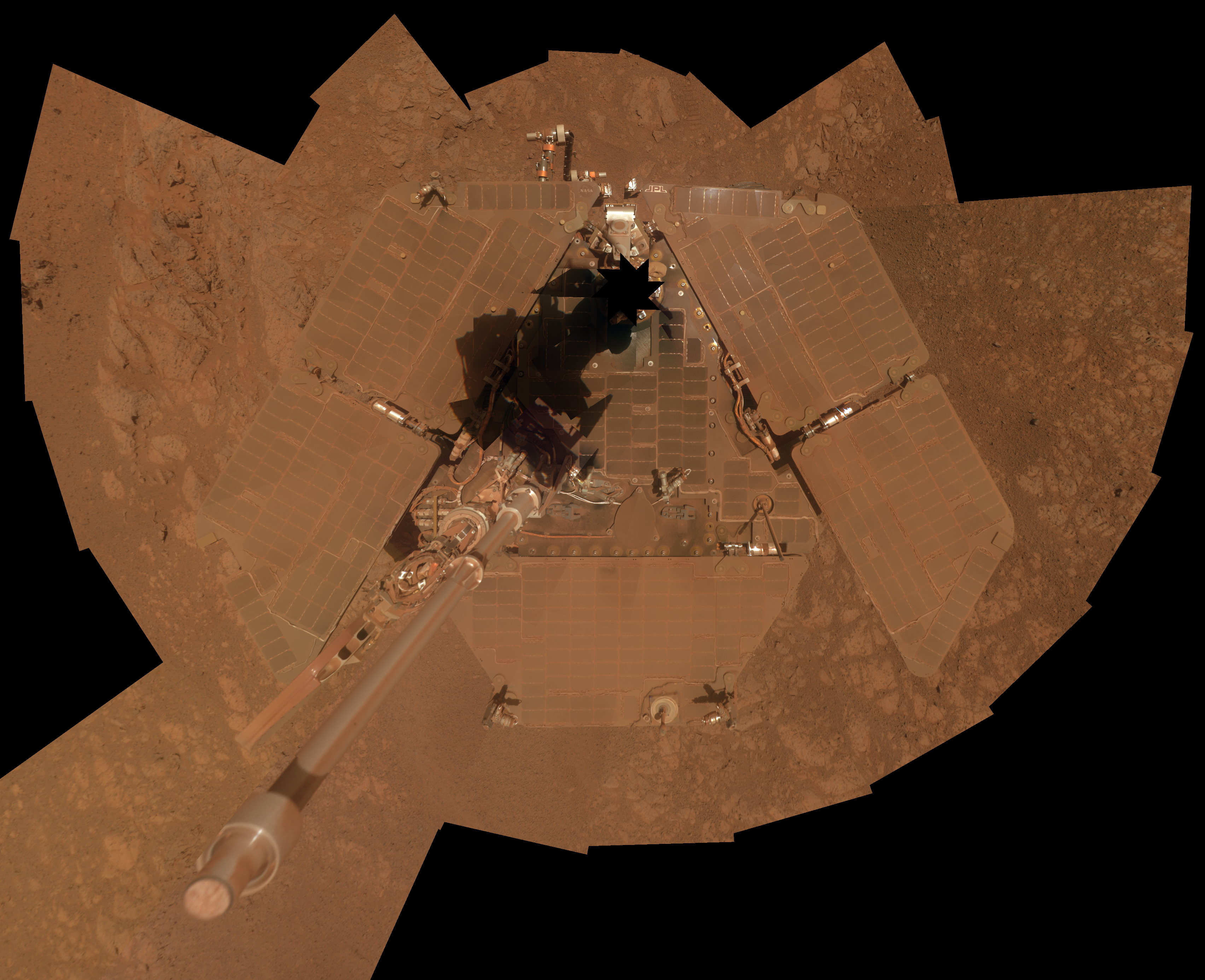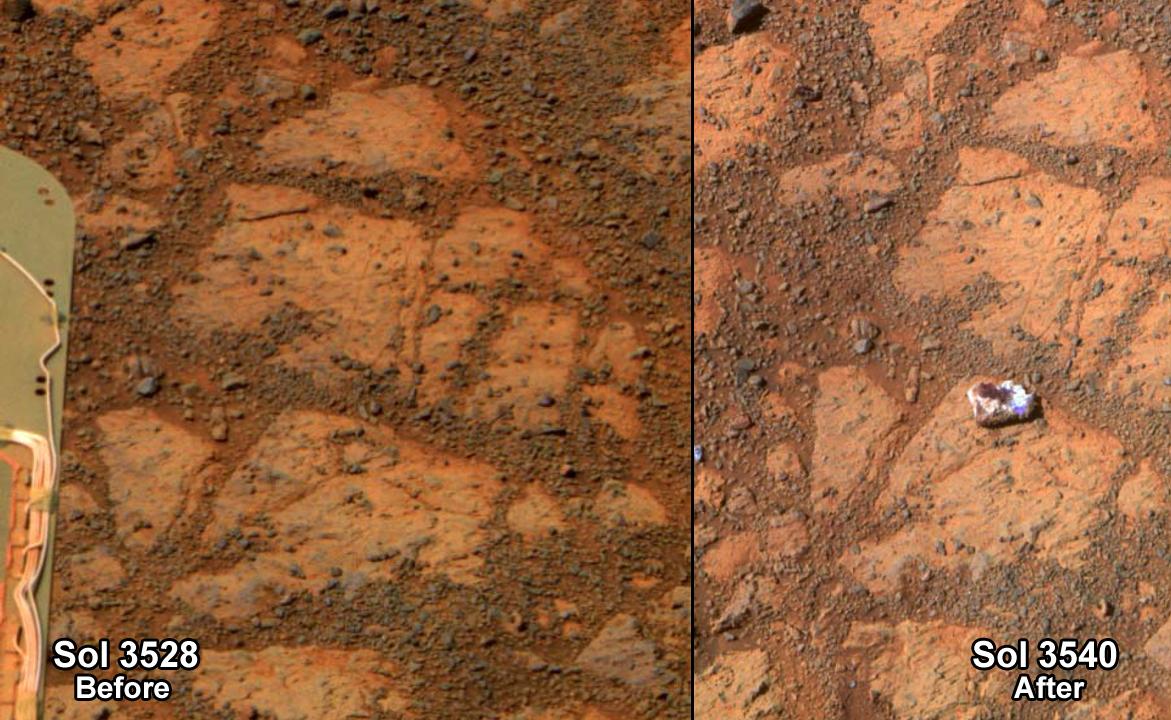Postcards from Mars: The Amazing Photos of Opportunity and Spirit Rovers
Approaching a Target Deposit on Mars Crater Rim
NASA's Mars Exploration Rover Opportunity used its navigation camera to capture the component images for this 360-degree view near the ridgeline of Endeavour Crater's western rim [Read the Full Story Here]
Mars Exploration Rover Opportunity in March 2014
A self-portrait of NASA's Mars Exploration Rover Opportunity taken in late March 2014 (right) shows that much of the dust on the rover's solar arrays has been removed since a similar portrait from January 2014 (left).
Self-Portrait by Freshly Cleaned Opportunity Mars Rover in March 2014
This self-portrait of NASA's Mars Exploration Rover Opportunity shows effects of wind events that had cleaned much of the accumulated dust off the rover's solar panels. It combines multiple frames taken by Opportunity's panoramic camera (Pancam) through three different color filters from March 22 to March 24, 2014, the 3,611th through 3,613th Martian days, or sols, of Opportunity's work on Mars.
Opportunity Rover's Marathon-Length Traverse
On Mars since January 2004, NASA's Opportunity Mars rover passed the distance of a marathon race in total driving on March 24, 2015.
Opportunity's Marathon Journey Infographic
This infographic displays some highlights along the route as NASA's Mars Exploration Rover Opportunity drove as far as the length of a marathon race during the first 11 years and two months after it landed in Eagle Crater in January 2004.
Self-Portrait by Freshly Cleaned Opportunity Mars Rover, False Color
A self-portrait of NASA's Mars Exploration Rover Opportunity taken by the rover's panoramic camera (Pancam) shows effects of recent winds removing much of the dust from the solar arrays. This version of the image is presented in false color to make differences in surface materials easier to see. Image released April 17, 2014.
Where Martian 'Jelly Doughnut' Rock Came From
This image from the panoramic camera on NASA’s Mars Exploration Rover Opportunity shows where a rock called "Pinnacle Island" had been before it appeared in front of the rover in early January 2014. This image was taken on Feb. 4, 2014. [See full story.]
Breaking space news, the latest updates on rocket launches, skywatching events and more!
Opportunity's Southward View of 'McClure-Beverlin Escarpment' on Mars
The boulder-studded ridge in this scene recorded by NASA's Mars Exploration Rover Opportunity is "McClure-Beverlin Escarpment." This view toward the south is a mosaic of images taken by Opportunity's panoramic camera (Pancam) on Dec. 25, 2013. [See full story.]
Mars Rover Opportunity Self Portrait: 2014
NASA's Mars Exploration Rover Opportunity recorded the component images for this self-portrait about three weeks before completing a decade of work on Mars. The rover's panoramic camera (Pancam) took the images between Jan. 3 and Jan. 6, 2014.
'Pinnacle Island' Rock on Mars
This before-and-after pair of images of the same patch of ground in front of NASA's Mars Rover Opportunity 13 days apart documents the arrival of a strange, bright rock at the scene. The rock, called "Pinnacle Island," is seen in the right image on Jan. 8, 2014. The image at left was taken on Dec. 26, 2013. [Read the Full Story of the Mars Mystery Rock Here.]

Tariq is the award-winning Editor-in-Chief of Space.com and joined the team in 2001. He covers human spaceflight, as well as skywatching and entertainment. He became Space.com's Editor-in-Chief in 2019. Before joining Space.com, Tariq was a staff reporter for The Los Angeles Times covering education and city beats in La Habra, Fullerton and Huntington Beach. He's a recipient of the 2022 Harry Kolcum Award for excellence in space reporting and the 2025 Space Pioneer Award from the National Space Society. He is an Eagle Scout and Space Camp alum with journalism degrees from the USC and NYU. You can find Tariq at Space.com and as the co-host to the This Week In Space podcast on the TWiT network. To see his latest project, you can follow Tariq on Twitter @tariqjmalik.










